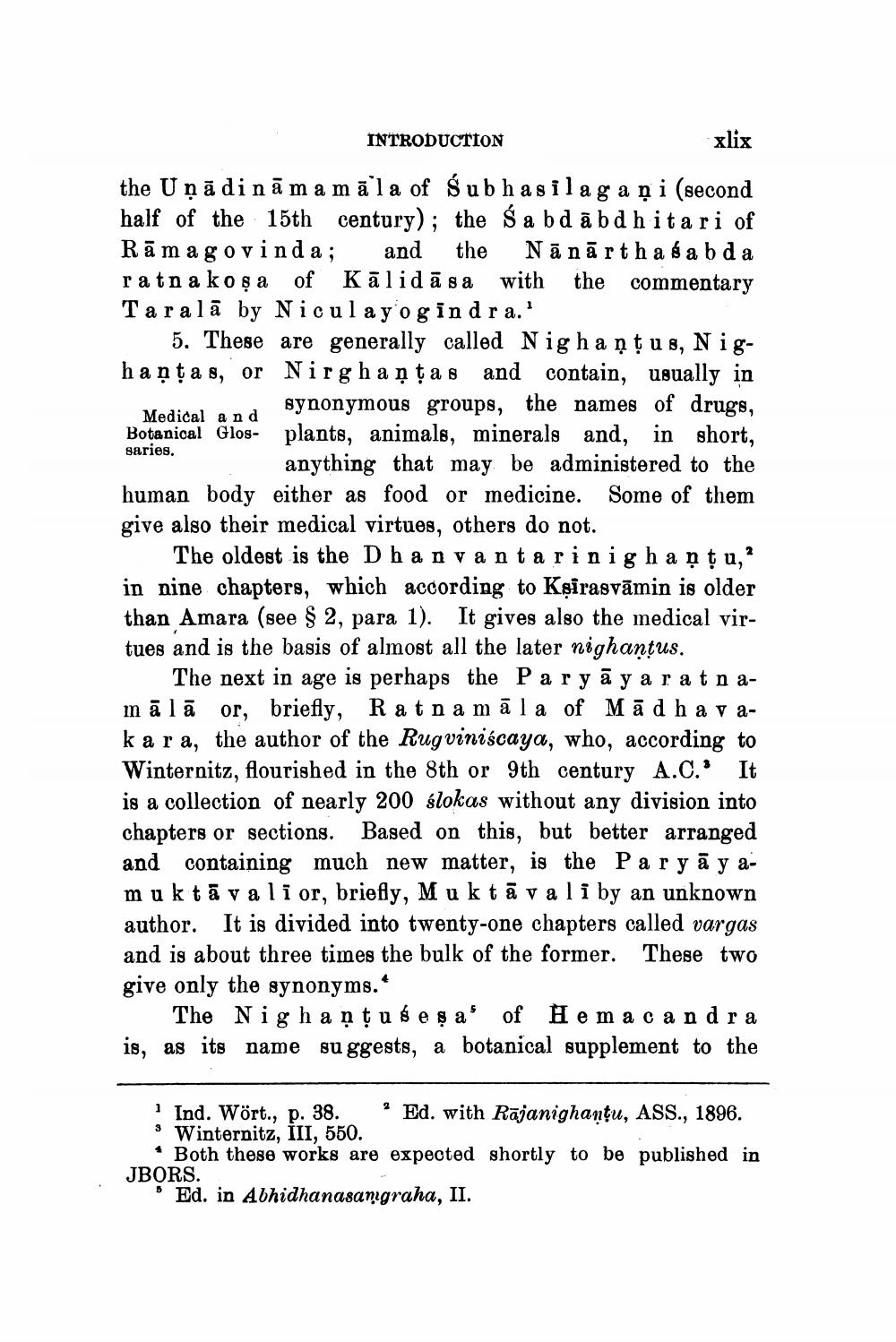________________
xlix
the Una dina mama la of Subhasilagani (second half of the 15th century); the Sabdabdhitari of Ramagovinda; and the Nanartha sabda ratnakosa of Kalidasa with the commentary Tarala by Niculayogindra.'
Medical and
5. These are generally called Nighantus, Nighantas, or Nirghantas and contain, usually in synonymous groups, the names of drugs, Botanical Glos- plants, animals, minerals and, in short, anything that may be administered to the human body either as food or medicine. Some of them give also their medical virtues, others do not.
saries.
The oldest is the Dhanvantarinig hantu,2 in nine chapters, which according to Kṣirasvamin is older than Amara (see § 2, para 1). It gives also the medical virtues and is the basis of almost all the later nighantus.
The next in age is perhaps the Paryayaratnamālā or, briefly, Rat na mala of Madhavakara, the author of the Rugviniscaya, who, according to Winternitz, flourished in the 8th or 9th century A.C.' It is a collection of nearly 200 slokas without any division into chapters or sections. Based on this, but better arranged and containing much new matter, is the Paryayamuktavali or, briefly, Muktavali by an unknown author. It is divided into twenty-one chapters called vargas and is about three times the bulk of the former. These two give only the synonyms.*
The Nighanțuses a' of Hema candra is, as its name suggests, a botanical supplement to the
INTRODUCTION
1 Ind. Wört., p. 38.
3 Winternitz, III, 550.
Both these works are expected shortly to be published in JBORS.
Ed. in Abhidhanasamgraha, II.
2
Ed. with Rajanighantu, ASS., 1896.




